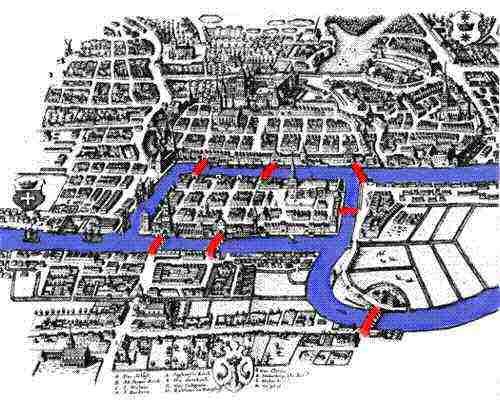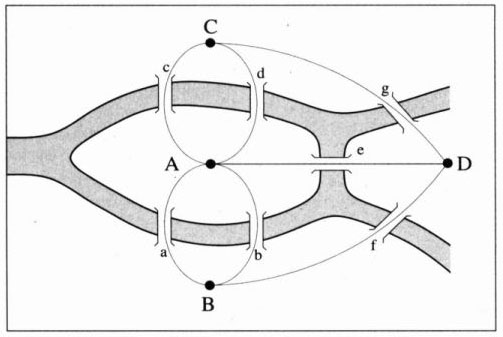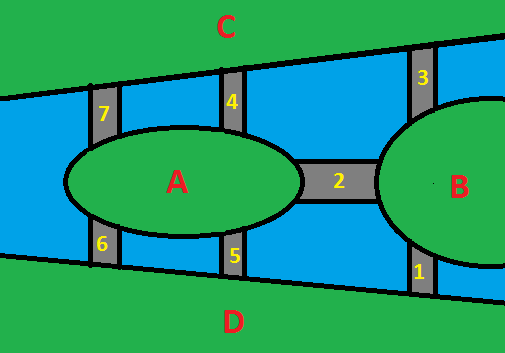Seven Bridges of Königsberg
The Königsberg bridge problem is a mathematical question of the early 18th century, which was illustrated by seven bridges of Königsberg. The problem was to determine whether there is a way in which you cross all seven bridges over the Pregel exactly once, and if so, whether a trail is possible, in which you can go back to the starting point. How Leonhard Euler in 1736 proved such a path or " Eulerian path " in Königsberg was not possible because all four rivers of islands and led an odd number of bridges. There should be a maximum of two banks (nodes) with an odd number of attached bridges ( edges). These two banks could be the start and end. The remaining banks would have an even number of bridges in order to leave also they are able to.
The bridge problem is not a classical geometric problem, since it does not depend on the precise location of the bridges, but just on which bridge which connects islands. Therefore, there is a topological problem that Euler solved with methods that are now attributed graph theory. The problem can be generalized to arbitrary graphs, and whether it is a cycle to the question of who uses all edges exactly once. Such a cycle is called the Euler circuit and a graph having a Euler circuit as Eulerian. The question of whether a graph is Euler tour, can be answered relatively easily and is also possible in directed graphs and graphs with multiple edges.
Due to the effects of war and rebuilding after 1945, the original situation in today's Kaliningrad is no longer given. Two of the leading to the island Kneiphof bridges no longer exist; at the northern and southern shores end only two instead of three bridges. Now although a Eulerweg is possible, but still no Euler circuit.










